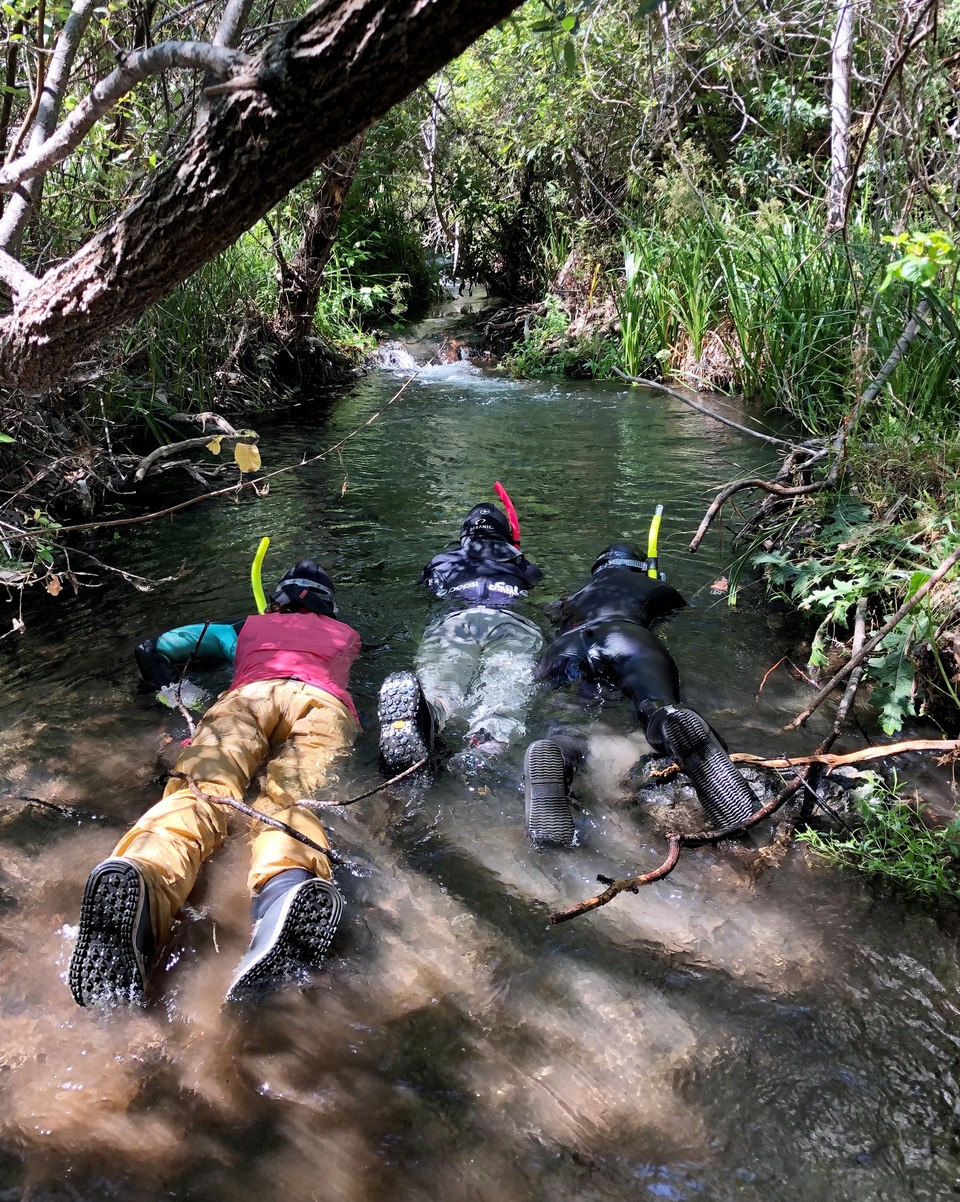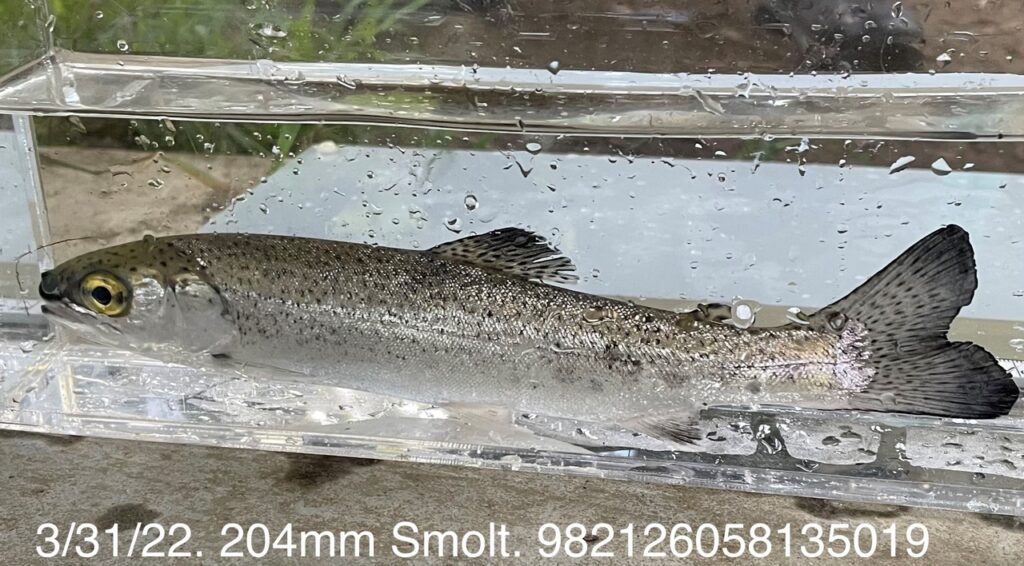
Rich Johnson steps through an inconspicuous gate between two backyards not far from the downtown San Mateo Caltrain station and points down a steep, overgrown streambank to a piece of PVC piping, barely visible beneath the tumbling water. “That’s our furthest downstream PIT array,” says Johnson, an aquatic biologist with the San Francisco Public Utilities Commission (SFPUC). The Passive Integrated Transponder array is one of four stations along San Mateo Creek that capture signals from tagged steelhead as they migrate up and down the creek.
More than a month after a series of atmospheric rivers deluged the Bay Area in January, San Mateo Creek is still running high, fed by unusually large releases from Crystal Springs Reservoir. The high flows have prevented Johnson and his team from replacing damaged equipment, and delayed their annual fish spawning survey. Nevertheless, says Johnson, “I think there have probably been adults coming upstream” from the Bay. The return of steelhead to the creek is recent, and a testament to the power of freshwater flows to restore native fish populations.
The creek, which descends alongside several roads through affluent Hillsborough before mostly vanishing beneath the streets and buildings of urban San Mateo, is little known to most local residents. Unlike some other Bay Area creeks, no “Friends of” group picks up trash from the channel or pulls invasive plants from its banks. Few of its neighbors have an inkling of the minor miracle occurring under their noses.
In the late 1880s, the Spring Valley Water Company dammed the creek to create Lower Crystal Springs Reservoir, blocking access to the upper watershed for migrating fish. In addition, “Spring Valley bought up all of the water rights downstream from the landowners so that Spring Valley wouldn’t have to release any water,” says SFPUC’s Tim Ramirez (the City of San Francisco bought Spring Valley in the 1930s). For more than 120 years, the only releases from the dam were when it spilled over. What water remained in the creek came from rainfall and runoff from landscape irrigation, and was too warm for cold-water fish such as Oncorhynchus mykiss—steelhead and their freshwater variant, rainbow trout.

Rainbow trout and steelhead are genetically identical, but while rainbow live their whole lives in the creek, for reasons that are not fully understood, some juveniles transform physiologically and behaviorally into anadromous steelhead, migrating to the ocean for most of their lives before, ideally, returning to the creek to spawn. “You can have two identically sized fish, and one will be a rainbow trout and the other will be losing its stripe and turning into this beautiful, silvery steelhead,” says Johnson.
Steelhead were federally listed as endangered in the 1990s, and in 2010, construction to improve the dam triggered consultation with resource agencies. The resulting Biological Opinion required SFPUC to begin water releases to the creek to restore native fish populations. The new flow releases started in January 2015, and the number of resident fish began to increase almost immediately. Within a couple of years, steelhead redds (egg nests) began to appear.
Two years ago, Johnson’s team spotted an adult steelhead, the first such sighting in the creek anyone can remember. But there is plenty of evidence that more are there. A few miles upstream from the PIT array, Johnson points out the best spawning habitat on the creek. “We call it the honeypot,” he says. “When the water is lower we can see redds there. Some of these redds are pretty small; those are from resident trout. But some are really very large, like two meters. That’s an adult steelhead doing that.”
Apart from a tiny wetland just below the dam that was created to benefit two other local endangered species, red-legged frogs and San Francisco garter snakes, SFPUC has done very little in terms of habitat improvements in the creek channel. Johnson says it would be nice to add some fixed, large woody debris and big boulders to create deep pools for larger fish, but on the whole, conditions in San Mateo Creek are quite favorable to fish, and since the releases from the dam began, the population of O. mykiss has swelled.
“It’s like night and day,” he says.
Top Photo: Creek snorkel survey. Photo: Rick Johnson